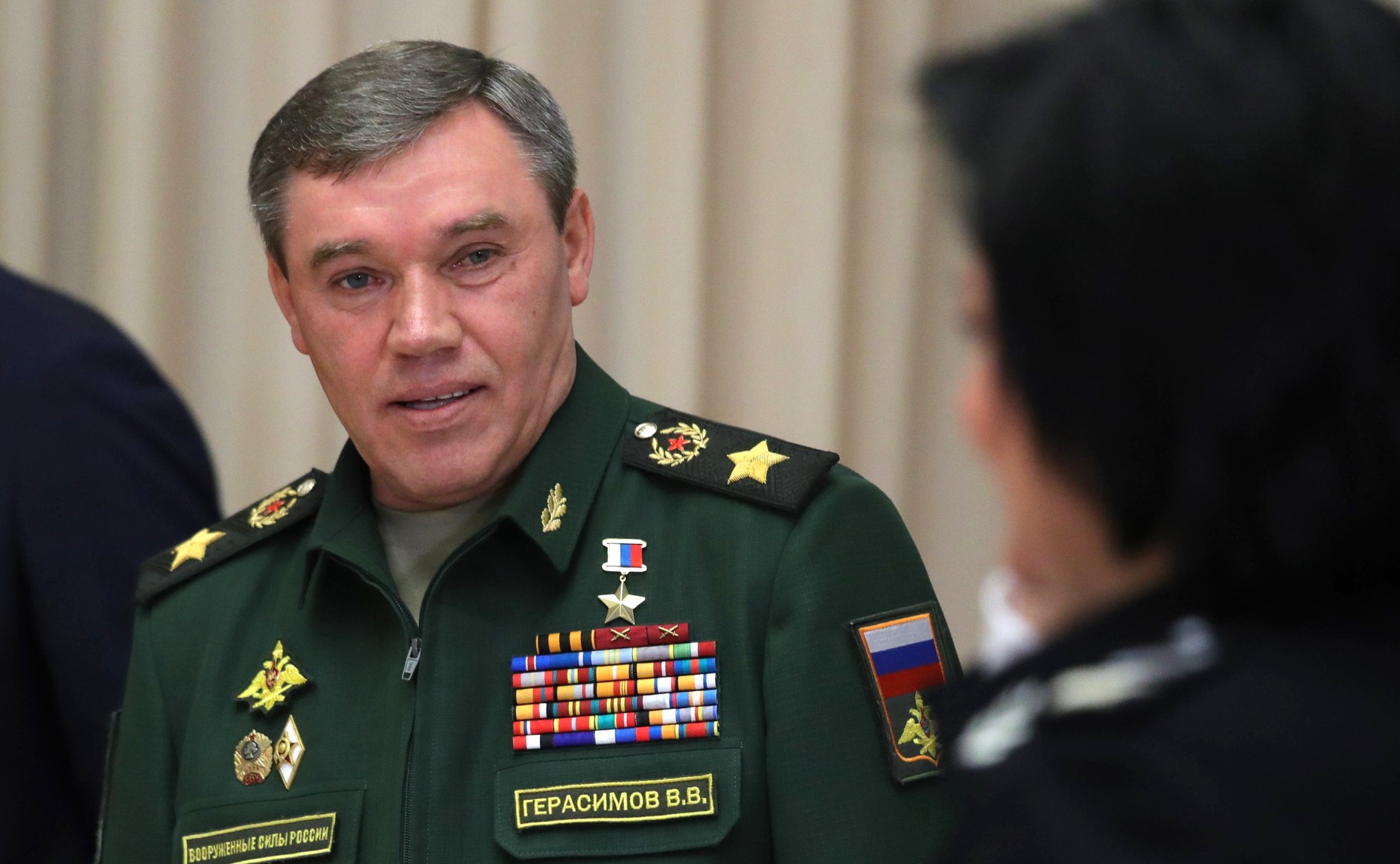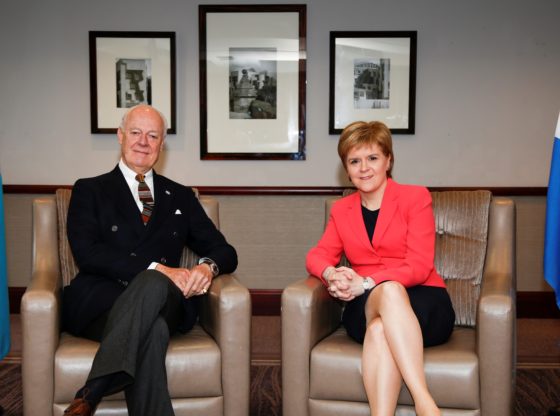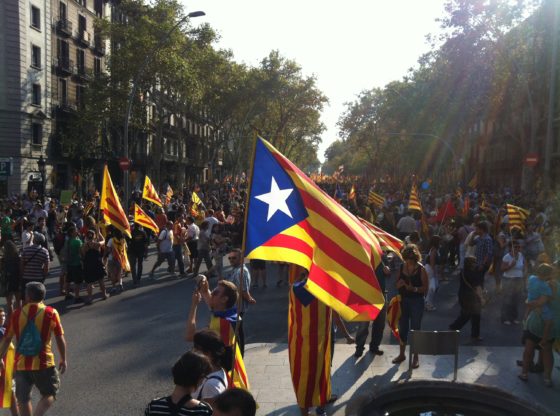Is ‘hybrid warfare’ new? Is Russia working to perfect it? Much of the recent commentary on Russian military strategy suggests that the answer to both of these questions is ‘yes’. Lindsay MacKenzie casts a skeptical eye across these assumptions.
Russia’s Zapad military exercises made a lot of noise throughout the last half of September. Add this to the already tense relations between Moscow and the West and it’s not surprising that the spectre of Russian hybrid warfare is again doing the rounds. A recent Politico article highlighted the shadowy, but now often sighted, Gerasimov doctrine; an apparent new kind of warfare named after Russia’s Chief of the General Staff, Valery Gerasimov. In 2013 the general published an article, ‘The Value of science is foresight’. In it, he concluded that the rules of war had changed. The piece has become the rallying point for those convinced that Moscow is wielding a new Russian way of warfare.
The Politico article is not alone. Since Moscow’s 2014 annexation of Crimea and war in eastern Ukraine, various observers and commentators have raised the sinister threat of Russian hybrid warfare. The BBC has described it as “the most worrying element of Russia’s new approach”. Al Jazeera notes that in Crimea, Moscow “proved a master of hybrid warfare”. In 2015 NATO Secretary General Jens Stoltenberg warned that NATO “must be ready to deal with every aspect of this new reality”.
Since Moscow’s 2014 annexation of Crimea and war in eastern Ukraine, various observers and commentators have raised the sinister threat of Russian hybrid warfare.
What is hybrid warfare? The most commonly used definitions include an exhaustive and confusing mix of unconventional capabilities, irregular forces, economic pressure, disinformation and propaganda, cyber operations, the use of proxies, and political warfare. Proponents of the model argue that its use in Crimea and eastern Ukraine points to a new blueprint for action elsewhere. It certainly sounds concerning. But are we really witnessing the birth of a new ‘Russian way’?
CREATE YOUR OWN HYPE
General Gerasimov’s 2013 article did analyse the shifting parameters of conflict; particularly how power can be manipulated in unconventional and non-military ways to achieve political goals. But it wasn’t a model or blueprint to be rolled out by Moscow. While it is now quoted as doctrinal evidence of a Russian hybrid warfare strategy, the reality is that Gerasimov’s piece was a musing on how Moscow needed to redefine its own capabilities to keep up with the changing nature of war. It was a reminder to the Russian military and political establishment that reforms were far from finished, and that more innovation would be needed.

If anything, General Gerasimov spends much of the piece explaining that hybrid war is a Western construct. Moscow regards everything from Kosovo independence, to the ‘colour revolutions‘ and NATO’s action in Libya as examples of it. This has led to the bizarre situation where Russia and the West accuse each other of being experts in the same type of warfare which, paradoxically, both say they are struggling to counter.
Unfortunately, many Western observers and commentators have fallen for the hype they helped create. Even if there were a doctrine, the examples used to explain its nefarious qualities aren’t all that convincing. Enough has been said about Russia’s annexation of Crimea to know that what happened there had a very specific logic; whether it was the relationship between the peninsula and Kiev, Crimea’s very own muddled history, or more practical realities like the existing status of forces agreements.
Yes, disinformation and electronic warfare were deployed by the Russians, but the situation was so unique that its replication elsewhere verges on the impossible. You won’t find a blueprint here. While much has been made of Moscow using ‘little green men‘ to set the scene on the ground, hiding insignia and concealing identities is hardly a new tactic. Neither is deploying special forces to support and assist rebel groups in provocation or fomenting chaos.
While much has been made of Moscow using ‘little green men’ to set the scene on the ground, hiding insignia and concealing identities is hardly a new tactic. Neither is deploying special forces to support and assist rebel groups in provocation or fomenting chaos.
In eastern Ukraine, much of the fighting has actually been conventional in nature. Think artillery and tanks. Various types of political and irregular warfare tactics were deployed initially, with the aim of whipping up a domestic insurgency. A somewhat typical train-and-equip programme was started. Some of it worked - a lot of it didn’t.
Moscow eventually deployed thousands of its own troops to make sure the pro-Russian fighters stayed afloat. Anyone with an internet connection can confirm their presence. For Moscow, operations in eastern Ukraine have been a mixture of tactics with a heavy dose of improvisation to allow flexibility. But describing this approach as some kind of ominous new model not only misunderstands Russia’s relatively limited goals (to destabilise Kiev); it also relegates the internal factors – Ukraine’s initial political instability and military shortcomings, for example – which have influenced the war’s progress.
NOT HYBRID, NOT A DOCTRINE
There are several major problems with describing Russia’s recent activity as a new doctrine of hybrid warfare. The label is confusing. What was once a useful but limited definition – a tactical description confined to kinetic conflict and non-state actors – has become a catch-all term for pretty much everything Moscow does; packaging it up into one large, sprawling interconnected spider diagram doctrine. Analytically, it’s not particularly helpful, even if it sounds like it should be.
The language of ‘smart power’ has been a staple in Washington briefing rooms for years. The US in particular has done its fair share of deploying special forces, rolling out ‘strategic communications’, and using militias and proxies.
Nor has Russia’s behaviour represented something particularly new. As mentioned previously, many of the tactics we have seen used used are not unusual or novel. Wars have never been limited to just the physical battlefield or to a conventional space. Tools and context may change, but anyone familiar with Sun Tzu or Carl von Clausewitz will have come across deception and subversion at some point.
The language of ‘smart power‘ has been a staple in Washington briefing rooms for years. The US in particular has done its fair share of deploying special forces, rolling out ‘strategic communications’, and using militias and proxies. Moscow has developed its own innovative language when exercising its instruments of national power – diplomatic, informational, military, economic – but this shouldn’t be a surprise. Countries maintain their own strategic cultures; they develop, learn lessons, and hone tactics over time.

For Russia, the 2008 war with Georgia was a watershed moment. Poorly organised and uncoordinated, the conflict highlighted the systemic problems within its military. It was the straw that broke the camel’s back, prompting a defence overhaul and a costly modernisation programme. The Georgian experience also renewed the debate about the future structure of Russia’s military. What is the best way for a country to achieve its political objectives and advance its interests? It is these very issues that General Gerasimov was talking about in his 2013 article.
In focusing on a balance between agile intervention capabilities and non-military instruments of power, Moscow has sought to gain a competitive advantage over its adversaries at low cost (and low risk). It’s a strategy that allows Russia to adapt, try things, and move on. It’s what we saw in eastern Ukraine. It doesn’t always work, but it’s also not a new doctrine. In General Gerasimov’s own words: “Each war represents an isolated case, requiring an understanding of its own particular logic, its own unique character”.
LANGUAGE IS IMPORTANT
Being surprised by an adversary’s behaviour doesn’t make it hybrid warfare. It just makes you ill-prepared. What has happened in Ukraine – essentially conventional forces (mixed with some irregular tactics) following up a covert operation – has not been hybrid warfare. Nor has it been particularly new. The last decade of Russian military documents reveal a country grappling with ways to achieve its political goals and ambitions, often with (comparably) limited resources. In pursuing its various goals, Moscow has shown itself to be opportunistic and, at times, innovative. The West has struggled to respond.
In pursuing its various goals, Moscow has shown itself to be opportunistic and, at times, innovative. The West has struggled to respond.
In being caught off-guard in Ukraine, it has obsessed over presenting Moscow’s behaviour as a new theory of war. In describing events as somehow unknown or shadowy, the West has found a way to make it easier to explain why it hasn’t been able to deal with it. Using an alarmist, all-encompassing catchphrase to describe Russia’s actions since 2014 is not only simplistic, it muddies the waters when it comes to assessing Moscow’s very real capabilities and its broader goals. Ironically, the knock-on effect is that the West ends up giving Russia more credit that it deserves.
The Zapad exercises have shown a powerful and capable military. But it’s worth remembering a few points from eastern Ukraine. For all the talk of a threatening hybrid warfare doctrine, Moscow’s actions have left it with few exit strategies from the conflict. It is increasingly isolated. Ukraine is militarily stronger, NATO more united. And Russia is now overwhelmingly viewed with suspicion, regardless of its true intent. If this really is a doctrine, it needs some work.
Lindsay Mackenzie is a European security analyst specialising in Russia. He writes regularly in the national media on these subject areas. Lindsay works with CABLE. He is on Twitter at: @l_pmackenzie
Feature image: President Putin at the Luzhsky training ground during the main stage of the Zapad-2017 joint Russian-Belarusian strategic exercises. Image: en.kremlin.ru











